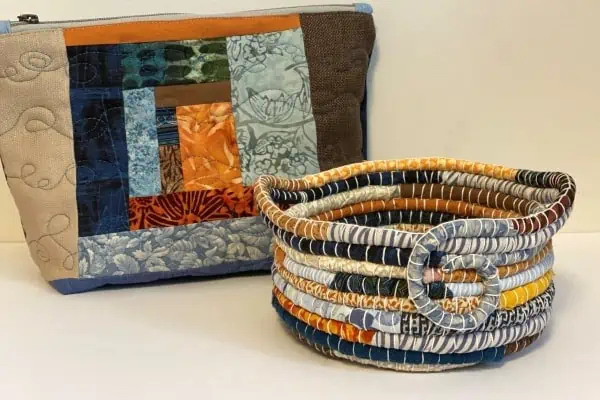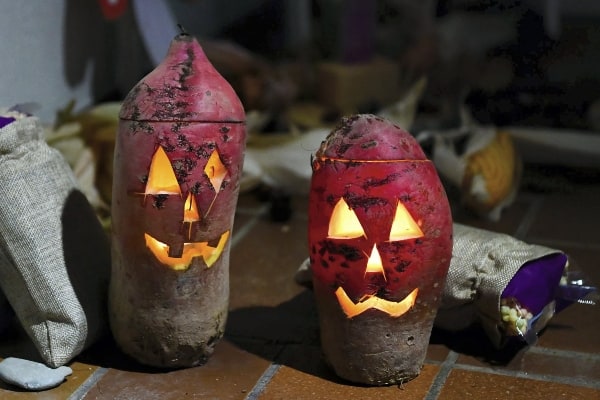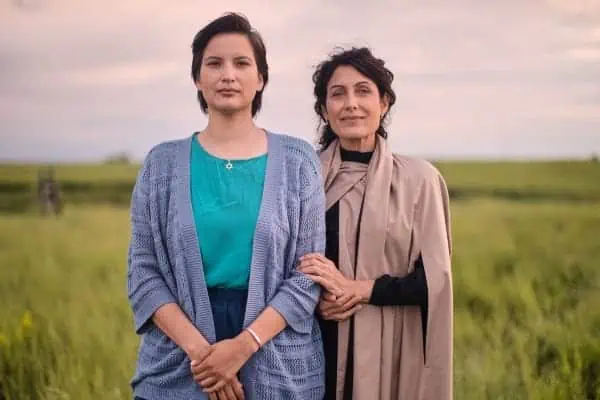Krista Reid has worked since last June to ensure the memorial exhibition known as Walking With Our Sisters would be “a space to create a personal journey” of awareness and healing. “It’s an opportunity for those who have been in violent situations, or have lost loved ones to violence, to provide a place of honouring, knowing that our families are not forgotten, our women are not forgotten, our sisters are not forgotten,” she says.
As cultural programs co-ordinator for the Kwanlin Dün Cultural Centre, Reid has engaged with local elders and volunteers, and the national collective behind the project, to turn the centre’s multi-purpose room into a sacred lodge of remembrance for two weeks.
Walking With Our Sisters had its origins in June 2012, when Christi Belcourt heard about a woman whose daughter — about the same age as Belcourt’s own daughter — had gone (and remains) missing. “It’s that very simple motherto-mother feeling of empathy and just caring for that person,” Belcourt explains from her home in Espanola, Ontario. “Even if you don’t know them, you can still feel it. So it just started from there.”
A visual artist of Michif (Mé- tis) heritage, Belcourt used social media to ask friends and fellow artists if they would be interested in making pairs of moccasin vamps (uppers) to honour murdered or missing aboriginal women and girls. The response was so overwhelming she decided to put out a one-year general call for submissions. “The only requirement was that people had to be caring souls, whether they were native, non-native, old or young, and it didn’t matter whether they were expert beaders or not.”
By the deadline, 1,723 pairs of vamps had arrived, including 333 from the United States and 13 from points abroad. The collection has since grown to 1,810 pairs, as well as 118 pairs of children’s-sized vamps representing youngsters who never returned from residential school. In each location, they are laid out in a path for people to “walk beside” those being commemorated.
At the outset, Belcourt had no idea the project would take on so much momentum. “I tend to focus on the small things, so I put my head down and get the work done,” she says. “If I start to think about the big picture too much, I can’t really understand the scope of it.”
Walking With Our Sisters has 19 members on its national organizing collective, with noted Métis author and academic Maria Campbell serving as advisory elder. Since its fi rst public sharing on October 2, 2013 in Edmonton, Alberta, it has been invited to several other communities across Canada. It will stop touring in September 2019.
It was Campbell who determined the memorial bundle of vamps should travel for a fixed period and not be housed afterward in a permanent venue such as an art gallery or museum. “We tend to not use the words “art installation”, even though in a lot of cases we’re being put up in galleries and museums,” Belcourt explains. “It really is a memorial ceremony. The people who come in are paying their respects to the lives of the women, and they are full participants in the memorial.”
In the five or six host communities she’s visited, Belcourt says she has witnessed people “feeling empowered, or transformed, or moved” by the experience. “They see the women’s lives presented in an honourable way, that their lives are valued, and it’s a collective response to how we’re all feeling. I find that really moving and somewhat surprising every time,” she says. “There’s great power in people coming together to do simple acts of kindness. There really is.” Belcourt particularly recalls the reaction of a non-native man in his mid-70s who approached her at the end of the walk. “He shook my hand, and he was crying, and he said, ‘I just didn’t know,’” she says.
Another participant she remembers is a man whose daughter had been murdered in Winnipeg. “Until that moment, maybe, he didn’t understand that there were people who didn’t know his daughter and still cared. He was really moved.”
The Whitehorse memorial, which opened on April 11, includes vamps submitted by four Yukon women who answered Belcourt’s original call-out, Reid says.
As in all other communities, participants will be asked to remove their shoes before walking between the displayed vamps along a red-carpeted path that lies above a layer of medicinal sage. “It’s cleansing, it’s protective, it’s connectedness to Mother Earth,” Reid explains.
She hopes the memorial will help break down stereotypes and let people see the “beautiful, resilient” First Nations people who still face many challenges arising from the colonial past. “We need to be able to make partnerships and move forward. Our races weren’t meant to be separate; our races were meant to work together collaboratively to take care of each other and this Earth,” she says.
Walking With Our Sisters is open to the public in the Kwanlin Dün Cultural Centre’s multipurpose room from 10:00 a.m. to 5:00 p.m. Monday through Saturday until April 25, with extended hours until 8:00 p.m. on Wednesdays.




